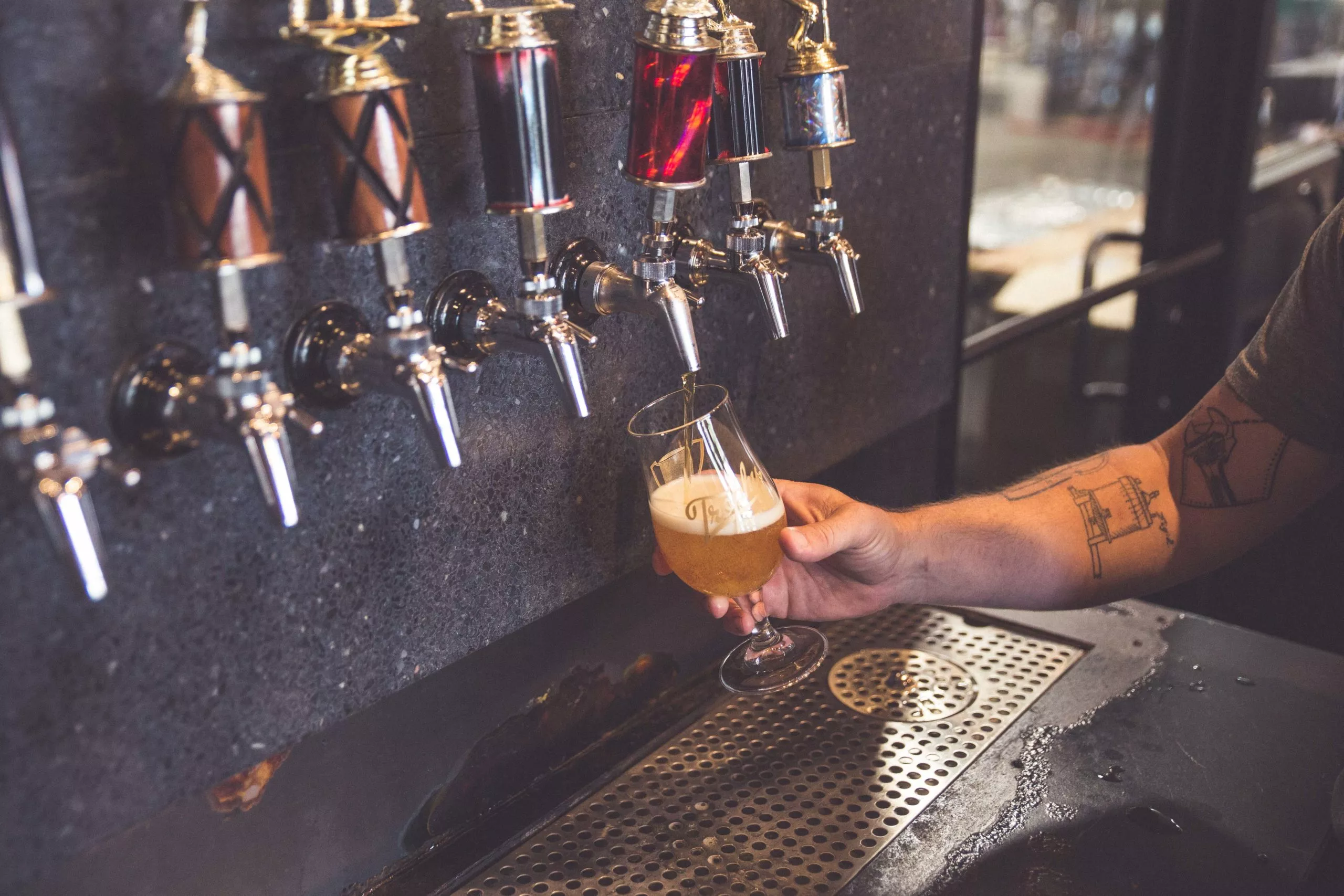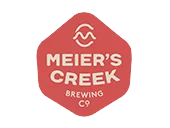Crafting the perfect beer is only part of the journey for brewery owners; pricing it correctly is essential for long-term profitability. Setting the right price means balancing competitive rates that attract customers with margins that cover costs like ingredients, labor, and distribution. Yet, many new brewery owners default to copying local prices or relying on rough estimates, which can quickly erode profits.
To thrive in today’s competitive market, a brewery needs a data-driven beer pricing strategy grounded in a solid understanding of costs, consumer demand, and local competition. This guide breaks down the key steps to building an adaptable pricing approach that supports sustainable growth, helping you position your beers for success while maintaining profitability.
The First Step in Beer Pricing: Analyze the Market
The first critical step in pricing your craft beer is to thoroughly understand the competitive landscape. Conducting a thorough market analysis will give you valuable insights to inform your pricing decisions.
Understand Competitor Pricing
Start by looking at what other local and regional breweries are charging for similar beer styles and quality levels. This will help you gauge the current price expectations of customers in your market.
Pay close attention to the pricing of both established craft breweries as well as newer, up-and-coming producers. Newer breweries may be more aggressive in their pricing to gain market share, while larger, more mature breweries may have more pricing flexibility. Understanding these nuances can inform how you position your own brand and pricing.
Evaluate how your competitors’ prices align with their brand positioning, production scale, and target customer base. This can provide insights into the pricing sweet spot for your particular market and customer segment. For example, a well-established, highly-regarded craft brewery may be able to charge a premium, while a newer, lesser-known producer may need to price more competitively to attract customers.
Evaluate Consumer Demand
In addition to competitor pricing, you’ll need to assess how much customers in your market are willing to pay for craft beer. This can vary significantly based on factors like:
- Your brewery’s brand reputation and cachet: As mentioned above, established breweries with strong brand recognition may be able to charge premium prices, while newer, lesser-known producers may need to price more competitively.
- The local beer culture and consumer preferences: Some markets are more price-sensitive than others when it comes to craft beer. Understanding the nuances of your local consumer base is crucial.
- The uniqueness and quality of your beer offerings: If you produce highly sought-after, limited-release beers, customers may be willing to pay premium prices. But for more mainstream styles, you’ll need to price accordingly.
Also analyze pricing across different beer styles, from IPAs to lagers to specialty releases. Certain beer categories may command higher prices than others based on consumer demand and production costs. Knowing the pricing differentials between styles can help you strategically price your portfolio.
To truly gauge consumer demand and price sensitivity, consider conducting surveys or focus groups with your target customers. This can provide valuable qualitative insights to complement the quantitative market data you’ve gathered. Understanding what motivates your target consumers to choose (or not choose) your beer is critical for setting optimal prices.
Malibu Brewing used Ekos to get a clear picture of their costs so they can “nail down” what each beer costs them to produce — essential data to know as they enter the world of distribution.
Learn How Malibu Brewing Used Ekos to Create a Competitive Pricing Strategy
Account for Pricing Across Sales Channels
The way you price your beer may need to differ depending on whether it’s sold through your own taproom or distributed through wholesale channels.
For on-premise sales in your taproom, you’ll typically have more pricing flexibility. Customers are visiting your brewery for the full experience, not just the beer. They may be willing to pay a premium for the atmosphere, service, and other amenities you offer.
However, for off-premise sales through distributors or retailers, you’ll need to factor in the typical industry markups. Wholesale pricing will need to account for the distributor’s margin as well as the retailer’s markup before the consumer sees the final price tag. Your taproom pricing can be higher to capture that premium on-site experience.
Analyzing your sales data across these different channels can reveal important insights. For example, you may find that your taproom sales have higher profit margins, while your wholesale distribution delivers greater overall volume and revenue. Understanding these channel dynamics can inform how you strategically price for each one and ensure you set sustainable, profitable prices that work for all parts of your business.
Step 2 for Beer Pricing: Track Your Costs and Sales
With a clear picture of the competitive landscape and consumer demand, you can start digging into the numbers that drive your beer pricing strategy. Carefully monitoring and analyzing your actual costs and sales data is crucial.
Understand Your Production Costs
Tracking your detailed production costs is the foundation for smart, sustainable growth. While many brewers start with basic calculations to establish their initial pricing, understanding even the simplest formula can help illuminate why detailed tracking matters.
For example, a basic beer pricing formula might look like:
(Total Batch Cost ÷ Number of Units) × Desired Markup = Wholesale Price.
So if your 15-barrel batch costs $1,200 to produce and yields 1,800 pints:
($1,200 ÷ 1,800) × 2.5 markup = $1.67 wholesale price per pint
Of course, real-world pricing quickly becomes more complex as you factor in variables like different package sizes, varying distributor margins, retail markup requirements, and competitive market dynamics. This is where granular cost tracking becomes essential—you need to understand exactly how changes in any variable will impact your final margins.
“[Effective growth is about] realizing not just how to fly by the seat of our pants and just go go but also when to pause…[and to] ask the right questions, get the right feedback, so that we know how to grow sustainably…to grow smart and not just blindly.”
Tony Ren, Maui Brewing
Accurately tracking the full cost of producing each batch is essential—you can’t just wing it or rely on rough estimates. This granular cost visibility is crucial for ensuring your prices cover your expenses and deliver your desired profit margins.
Specifically, tracking costs should include:
- Ingredient costs (grains, hops, yeast, etc.): The prices you pay for raw materials can fluctuate, so you need to stay on top of current market rates.
- Labor and overhead (for brewing, packaging, etc.): Factor in the wages, benefits, and other costs associated with your production staff.
- Utilities and other facility expenses: Don’t forget to account for the costs of operating your brewery facility, from electricity and water to maintenance and repairs.
- Packaging materials (bottles, cans, labels, etc.): The type of packaging you use can have a significant impact on your per-unit costs.
- Equipment maintenance and depreciation: Building in the costs of maintaining and eventually replacing your brewing equipment is crucial.
To fully understand your production costs, you’ll also need to factor in any contract brewing or co-packing fees if you utilize those services. These third-party costs can have a major impact on your pricing strategy and profitability.
Many breweries underestimate or overlook certain production costs, which can lead to pricing that doesn’t adequately cover their true expenses. Using a comprehensive brewery management system can help you easily track and analyze all these costs at the batch level.
Factor in Overhead and Other Expenses
In addition to direct production costs, consider your overall business expenses when setting beer prices. These can include:
- Rent and utilities for your brewery and taproom: The location and size of your facilities will impact these fixed overhead costs.
- Administrative overhead like salaries, insurance, and accounting: Don’t forget to factor in the costs of running the non-production side of your business.
- Marketing and sales costs: Promoting your brand and generating sales requires ongoing investment.
- Distribution and logistics expenses: If you sell through wholesale channels, account for the costs of working with distributors.
One often-overlooked expense is financing costs, such as interest payments on loans or equipment leases. Make sure to incorporate these into your pricing model as well, as they can significantly impact your profit margins.
A more comprehensive pricing formula that includes overhead might be:
((Direct Costs + (Annual Overhead ÷ Annual Production)) × Markup) + Distribution = Wholesale Price.
For instance, with $120,000 annual overhead and 100,000 units annual production: (($0.67 direct costs + ($120,000 ÷ 100,000)) × 2.5) + $0.50 distribution = $2.54 wholesale price per unit.
While these formulas provide a solid foundation for pricing decisions, the real insights come from analyzing how these numbers play out in your actual sales data and profit margins over time.
Analyze Sales Data and Profit Margins
Looking at your historical sales data can provide valuable insights to inform your pricing strategy. Analyze metrics like:
- Sales volume and velocity for each beer SKU: Understand which products are your top sellers and which may be underperforming.
- Profit margins on individual products: Identify your most (and least) profitable beers to optimize your portfolio pricing.
- Customer purchase behavior and price sensitivity: Analyze how consumers respond to pricing changes, both in terms of quantity sold and revenue generated.
This data can help you identify your most (and least) profitable beers, as well as how price changes impact consumer demand. Aim to price your products at a level that delivers your target profit margins while still meeting customer expectations.
To get a comprehensive view of your profitability, consider conducting a detailed cost-of-goods-sold (COGS) analysis. This will allow you to pinpoint the true contribution margin for each beer SKU, revealing your most lucrative products.
Keep in mind that profit margin is the key metric—don’t get too caught up in just maximizing revenue. Focusing on driving higher margins per unit sold is the best path to sustainable profitability.
Step 3 for Beer Pricing: Adjust Prices as Needed
Beer pricing is not a one-time exercise—it requires ongoing monitoring and strategic adjustments as conditions change. Stay vigilant for factors that may impact your costs or demand, and be prepared to make pricing tweaks accordingly.
Address Ingredient Price Fluctuations
One of the most common reasons breweries need to adjust their beer prices is changes in the cost of key ingredients. If the price of hops, malts, or other materials rises significantly, you’ll need to raise your beer prices to maintain your profit margins.
Track the market prices of the ingredients you use, and build in some flexibility to adjust your retail prices as needed. Long-term ingredient contracts can help provide more pricing stability, but you’ll still need to monitor the spot market for any unexpected spikes.
Account for Seasonal Demand Shifts
Craft beer consumption patterns often vary significantly by season. Lighter, more refreshing styles tend to sell better in the warmer months, while darker, maltier beers may be more popular in the colder seasons.
As demand fluctuates, you may need to adjust pricing accordingly. For example, you might raise prices slightly on your summer seasonal beers to capture the peak demand, then lower them again when that seasonal wave passes. This can help maximize your profitability during high-volume periods while remaining competitively priced during slower times.
Pay close attention to your sales data over time to identify seasonal trends, then build pricing flexibility into your portfolio to take advantage of them.
Price New Products Strategically
When introducing a new beer to your lineup, you’ll need to carefully consider how to price it. Pricing a new product is both an art and a science—get it right, and you can maximize profits and build excitement around your latest creation. Get it wrong, and you risk turning off customers and leaving money on the table.
Factors to weigh when pricing new beers include:
- The uniqueness and quality of the beer: If it’s a highly differentiated, premium offering, you may be able to charge more. Think limited-release, barrel-aged, or experimental styles that craft beer enthusiasts are eager to try.
- How it compares to your other offerings in terms of cost to produce: New beers with higher input costs for ingredients, labor, or packaging will likely need to be priced higher to maintain your target margins.
- Your target market and their willingness to pay for new/innovative beers: More adventurous, affluent craft beer drinkers may be open to trying pricier new releases, while your core customers may be more price-sensitive.
- Whether you want to use an introductory “launch” price: Some breweries will price new beers slightly lower at first to drive initial trial and adoption, then raise the price once the beer has gained traction.
Finding the right price point that maximizes profitability without scaring off your target customers is a delicate balancing act. Pay close attention to early sales data on new releases, and be ready to adjust the price up or down as needed based on customer response. The goal is to identify that sweet spot that works for both your business and your beer enthusiasts.
Leveraging Technology to Streamline the Beer Pricing Process
Managing all the data and variables involved in effective beer pricing can be a complex, time-consuming process. But using the right brewery management software can make it much more efficient and insightful.
Integrate Cost Tracking
A comprehensive brewery management system should automatically collect and analyze your production costs, inventory data, and sales metrics in one centralized platform. This provides a holistic view of your operations that can directly inform your pricing strategy.
With integrated cost tracking, you can easily:
- Monitor the detailed costs of each batch of beer: Capture every expense, from ingredients to labor to packaging, to understand the true cost of producing each product.
- Analyze how ingredient, labor, and overhead costs change over time: Spot trends and patterns that may necessitate pricing adjustments.
- Understand your true cost of goods sold (COGS) for each product: Gain visibility into your margins to make informed pricing decisions.
Integrated cost tracking in your brewery management software is crucial for optimizing your supply chain and pricing strategy. As Pat Greer, director of Supply Chain Services at First Key Consulting, aptly summarizes, “Supply chain management is all about having the right materials, supplies, and resources in the right place, at the right time, in the right location, and for the right price.”
With detailed visibility into your costs and inventory, you can ensure you’re always sourcing and pricing your materials optimally. Integrated cost tracking provides the granular data needed to identify opportunities for supply chain optimization, from negotiating better prices with suppliers to adjusting inventory levels to minimize waste and maximize efficiency.
This kind of granular cost visibility is essential for setting prices that truly cover your expenses and deliver your target profit margins.
Webinar: Forecasting & Planning Tips for Beverage Inventory & Production from Ekos and South City Ciderworks
Conduct a Profit Margin Analysis
In addition to tracking costs, your brewery software should also give you real-time insights into the profitability of your beer SKUs. Look for features that allow you to:
- Calculate and visualize profit margins at the individual product level to see which beers are your cash cows and which are underperforming.
- Identify your most (and least) profitable beers to make strategic pricing and production decisions.
- Analyze how pricing changes impact overall profitability and model different pricing scenarios to optimize your portfolio.
This data-driven profit analysis empowers you to make strategic pricing decisions that maximize the financial performance of your entire beer portfolio.
Leverage Reporting and Forecasting
Comprehensive reporting capabilities are crucial for informing and validating your beer pricing strategy. Your brewery software should provide:
- Custom reporting on costs, sales, inventory, and other key metrics to help you gain a deep, data-driven understanding of your business.
- Ability to analyze historical trends and forecast future performance to anticipate and prepare for changes in the market.
- Integration with your accounting system for seamless financial visibility that ties your pricing data directly to your overall financial picture.
With these robust reporting features, you can:
- Uncover pricing optimization opportunities
- Model the financial impact of pricing changes
- Build accurate sales and revenue projections
The more data-driven insights you have access to, the more confidently you can set and adjust your beer prices.
Webinar: Accounting Best Practices for Your Craft Beverage Business
Develop a Dynamic, Data-Driven Pricing Strategy
Effective beer pricing is not a one-time exercise—it’s an ongoing, dynamic process that requires constant monitoring and adjustment. The key is to build a pricing strategy that is:
Responsive to Market Conditions
Your beer prices should flex and evolve as market factors change. Stay vigilant for shifts in competitor pricing, ingredient costs, seasonal demand patterns, and other variables that may necessitate pricing tweaks. Being able to quickly adapt your pricing as conditions change is crucial for maintaining profitability.
Grounded in Detailed Data
Make pricing decisions based on a comprehensive understanding of your true costs, profit margins, and customer behavior. Avoid relying on guesswork or rule-of-thumb pricing—the more data you can collect and analyze, the better equipped you’ll be to set optimal prices.
Aligned with Business Goals
Your beer pricing strategy should directly support your overall financial and growth objectives. Price to maximize profitability, not just revenue. This may mean being willing to forego short-term sales in favor of more sustainable, higher-margin pricing.
Adaptable and Iterative
Continuously monitor the results of your pricing approach and be willing to test and refine it over time. What worked six months ago may need to change as your business evolves, your costs shift, or your competitive landscape transforms. An effective pricing strategy is never “set it and forget it”—it requires ongoing optimization.
Optimizing Your Process to Price Beer for Long-Term Profitability
Developing an effective, data-driven beer pricing strategy is critical for the long-term financial health and growth of your craft brewery. By closely analyzing the market, diligently tracking your costs and sales, and making strategic pricing adjustments, you can find the sweet spot that keeps your customers happy and your business profitable.
Leveraging the right brewery management software is key to streamlining this process and unlocking the data insights you need to make confident pricing decisions. Ekos provides comprehensive cost tracking, profit analysis, reporting, and forecasting capabilities to power your pricing strategy. To learn more about how Ekos can help you maximize the profitability of your craft beer, schedule a demo today.





